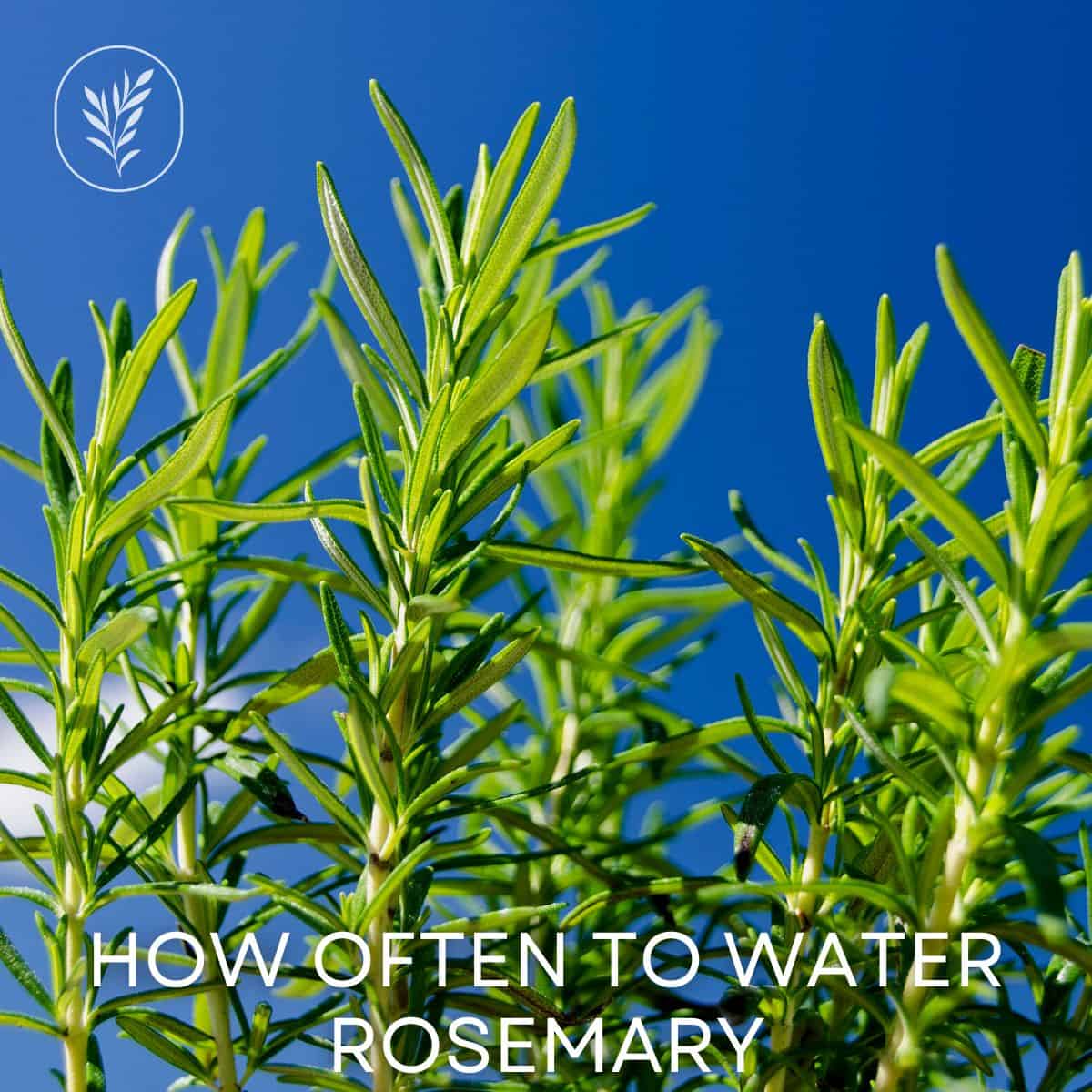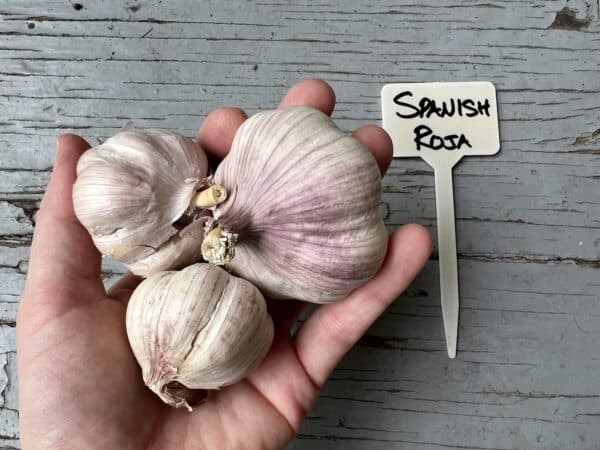Rosemary plants are wonderful for new gardeners because of their minimal care requirements. That said, there are a few maintenance tips in terms of watering for keeping Rosemary healthy.
Rosemary plants are generally watered once or twice a week when grown indoors or when grown outdoors in warm climates as larger shrubs. Rosemary needs to be watered more often in hot temperatures and in environments with lots of direct sunlight. Watering Rosemary too often can lead to brown leaves and root rot. Keeping Rosemary healthy is easiest when the plant is grown in well-draining soil and a breathable planter that drains out excess water easily.
Keep reading to learn more about how often to water Rosemary plants.
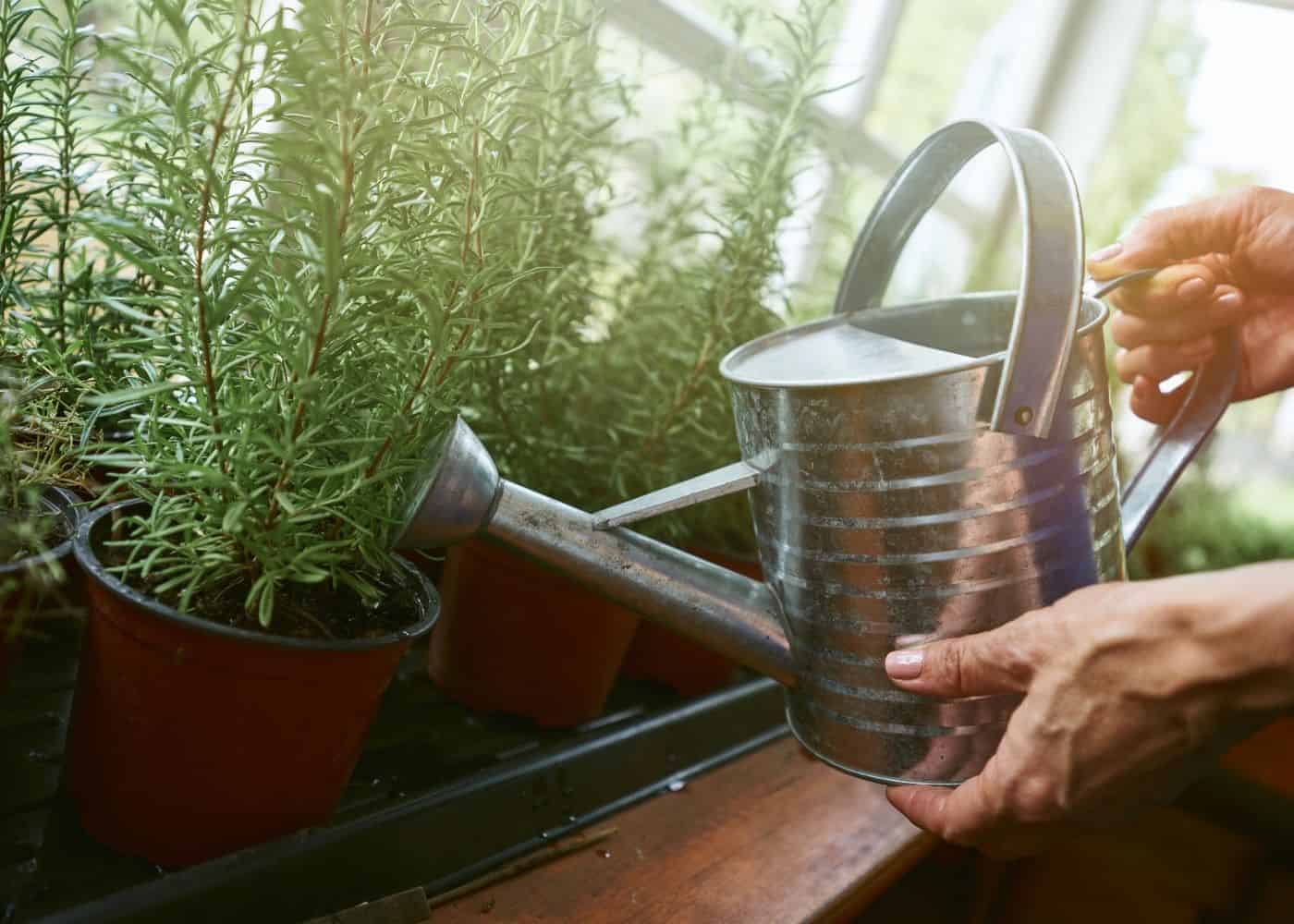
How often to water rosemary
The frequency of watering a Rosemary plant depends greatly upon where the plant is being grown. In general, plants grown in hot sunny spots tend to require watering every few days. This is especially true if the Rosemary is grown in a small pot that dries out quickly. Rosemary grown in cooler temperatures and overcast weather may only require watering every 1-2 weeks.
Watering Rosemary plants are easiest when the roots are growing in airy soil that allows excess water to drain out. This type of soil allows for small air pockets in the soil which are very important for the health of the plant. Soil that tends to retain water, such as heavy clay, is much harder to grow Rosemary in as the roots do not have access to pockets of fresh air in the soil. Rosemary should also be grown in a planter with a drainage hole made of a breathable material such as terracotta.
Watering tips from rosemary’s native climate
Rosemary is originally from the Mediterranean where it has ample access to sunlight, well-draining soil, and minimal rainfall. Rosemary grows well in warmer climates with similar conditions. Take a cue from the open areas in which Rosemary thrives and ensure your plants are receiving lots of sunlight, ample air circulation, and moderate air humidity. These two factors are particularly important for indoor-grown Rosemary.
In its native climate, wild Rosemary grows deep roots so the plant can access water during long summer dry spells. Rosemary grown in a pot at home will require watering more frequently than an established wild plant as the planter limits the depth. Decrease watering of all Rosemary plants in the winter (read more about winter rosemary care).
“Rosemary is a seaside plant – its name comes from ros-marinus, meaning dew of the sea. In deference to its origins, give an indoor rosemary plant a biweekly misting, or set it in a saucer of pebbles filled with water that will evaporate and create an envelope of humidity around the plant.”
Herbs: The Complete Gardener’s Guide, by Patrick Lima
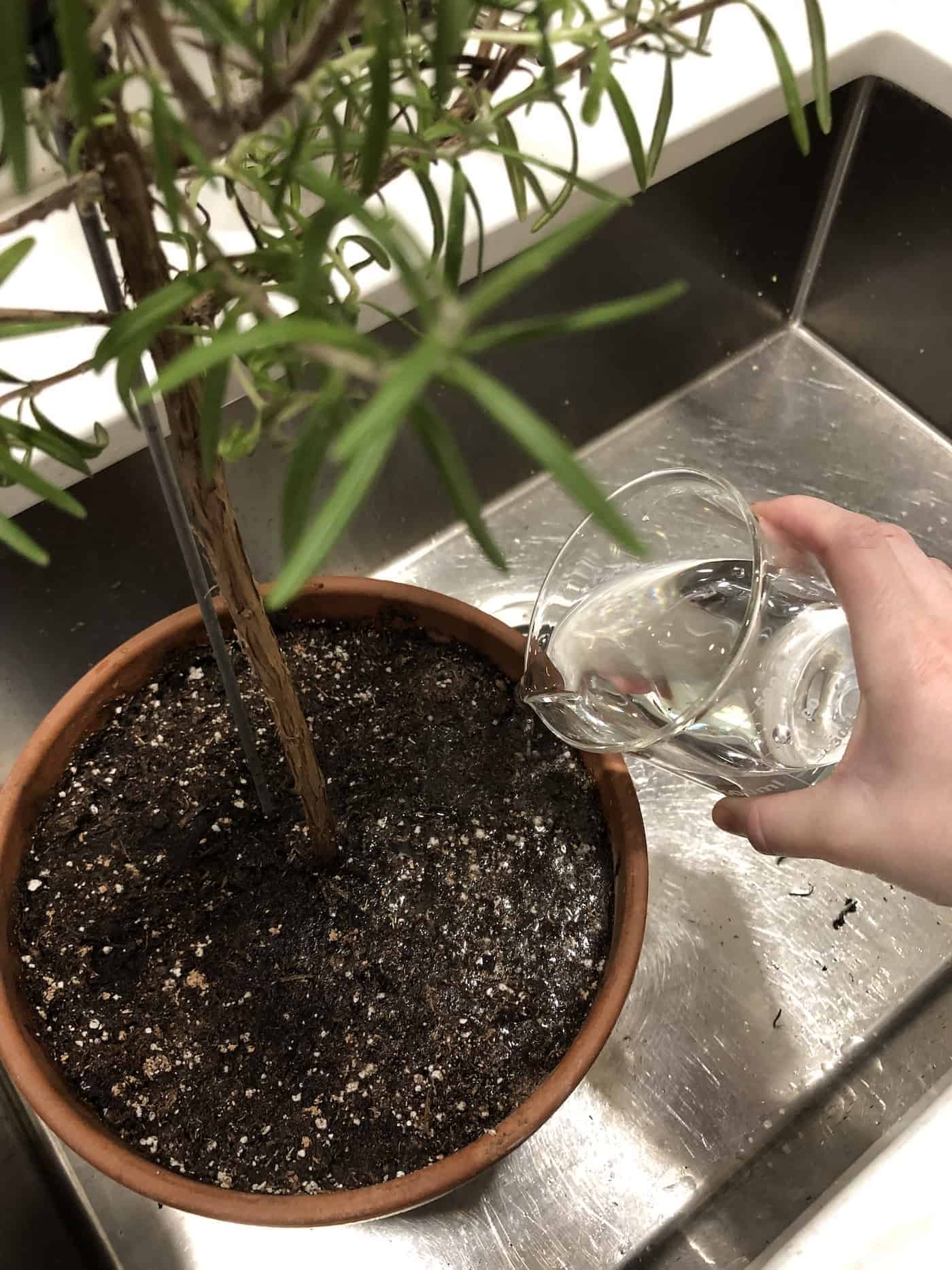
How often to water rosemary indoors in pots
Many people opt to plant their Rosemary in containers and keep them indoors. Rosemary plants grown indoors tend to require watering at least 1-2 times per week. In cooler homes with low light levels, a Rosemary may only require watering every week or two. In warm homes with dry air, a plant may require watering every 2-3 days (although this is relatively uncommon).
Rosemary roots are confined when grown in a small container and can’t spread out and grow deep to look for water. Therefore, watering more frequently will prevent the plant from drying out.
That said, overwatering Rosemary grown indoors is still quite common. Look for signs of overwatering like brown root tips or a planter pot that is consistently heavy. Rosemary grown indoors should always be left to dry out between waterings. Take note of the pot after watering the Rosemary and notice how it becomes lighter throughout the week. Rosemary plants can even wilt for a day or two and perk right back up after watering (but don’t let it wilt on a regular basis).
“Put your rosemary plant in your sunniest window and allow it to dry out between waterings until it almost wilts. Don’t water or mist the plant when the weather is overcast.”
The Herb Gardener: A Guide for All Seasons, by Susan McClure
How often to water rosemary grown in pots outdoors
If your Rosemary is planted in pots outdoors, it requires similar watering care as if it were planted indoors. The big difference is the outdoor temperature fluctuations. Since the temperature indoors is much more regulated than outdoors, watering will be slightly different. For instance, placing your Rosemary pots in a sunny location will generally result in soil that dries out more quickly than it would indoors (even in a sunny window).
Rosemary plants require more water when receiving direct sunlight. Water them every few days in sunny weather but decrease watering when the weather is overcast or if the Rosemary is temporarily in a shady spot.
As with indoor Rosemary, you only want to water outdoor Rosemary when the soil feels dry to the touch. The planter pot should be relatively light when lifted up. Make sure to water the plant thoroughly, allowing the pot to drain completely. Avoid letting the pot sit in water for prolonged periods as this can develop root rot.
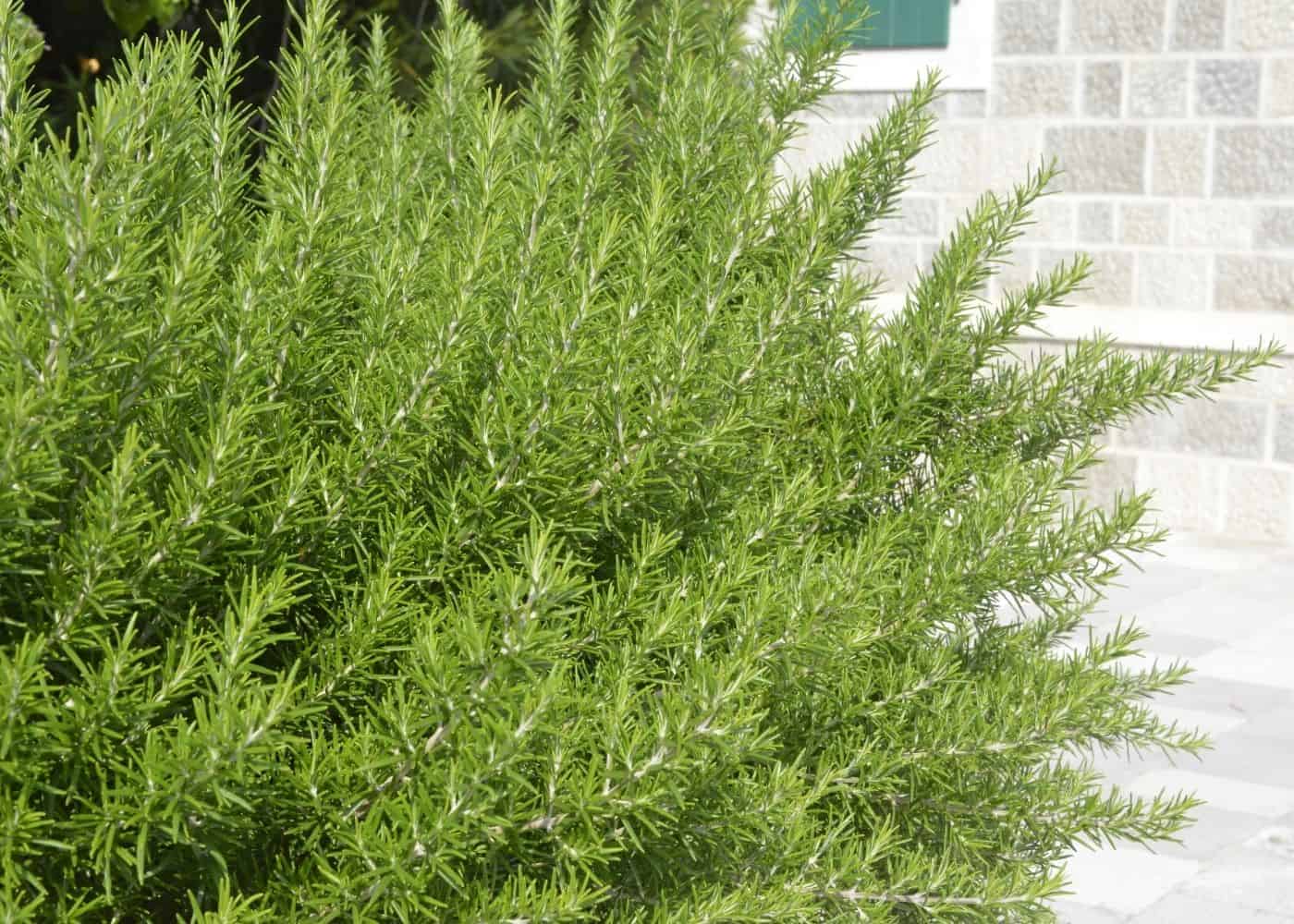
How often to water rosemary grow outdoors in the ground
Rosemary planted outdoors in the soil tends to become quite a bit more drought-resistant than if it were planted indoors (or in a pot outdoors). This means you can get away with watering less frequently because it has access to more moisture in the soil. This is particularly true for larger established plants with deep roots.
One thing to keep in mind when you are watering your Rosemary plant is the time of year. For example, you may need to water your plant 1-2 times per week in the summer, once every other week in the spring and fall, and rarely at all in the winter unless you live in a severely dry climate. If you water too frequently in the winter, your Rosemary plant may develop root rot.
How often to water a newly transplanted rosemary
Rosemary plants that have been recently transplanted into outdoor soil generally need to be watered more frequently than established plants. Their roots are still short having been limited in length after being grown in a pot.
When you first transplant your Rosemary to a pot or soil, water it thoroughly. Watering your plant thoroughly when you first get it allows it to establish roots, so it grows healthier and lasts longer.
How often to water rosemary seeds
Instead of buying your Rosemary as a sapling or small shrub, you can grow it from seeds. However, the seeds take a long time to germinate, so planting them 3-6 months before the growing season is best.
Use 3-5x more Rosemary seeds than you require, as their germination rate is extremely low (30%). Once you place your seeds in a seed-starting tray, mist them until they are moist. This helps the seeds settle into the soil and develop roots. Keep the soil misted and moist until the seeds germinate and sprout. Keep air circulation high and keep the seed tray warms as the seeds sprout.
Once your seeds have sprouted and are around 3-6 inches tall, transplant them into the soil outdoors or in a larger planter. Watering can be decreased as the root systems become more established.
How can you tell if your rosemary plant needs water?
Your Rosemary plant will have wilted leaves and will look sad and lifeless if it truly needs water. The pot will also be light because the soil is so dry. Water the plant deeply after a long dry period.
A good way to ensure all the soil is saturated is to place the planter in a shallow tub of water for an hour and allow the water to wick up into the soil. Poking holes in the potting mix can also help water infiltrate the overly-dry potting mix. However, once you give it a deep watering, don’t water it again until the soil becomes dry again to prevent overwatering.
Can rosemary be overwatered?
Rosemary plants can easily be overwatered. Rosemary is often overwatered if the plant is watered on the same schedule as more thirsty plants in the same area. Rosemary is also prone to overwatering during overcast weather and cooler temperatures. Watering should be decreased whenever direct sunlight levels are decreased and when humidity levels are high.
Overwatering Rosemary can lead to root rot, pest, and disease problems, and sometimes lead to the demise of the plant. Fortunately, there are a few steps you can take to prevent the worst effects of overwatering. These preventative measures include using a light airy potting mix, and a breathable planter, and checking to ensure the planter is draining out water easily from the drainage hole at the bottom.
The best pots for draining excess water
Terracotta and unglazed clay pots are preferred for planting Rosemary because they absorb excess water, making them much better for Rosemary than other types of pots. Rosemary does not like wet soil or roots and needs a planter with plenty of drainages. Plastic pots are not as breathable as earthenware and don’t allow for as much drainage as clay or terracotta.
The best potting mix for draining excess water
Watering Rosemary too often can be particularly damaging to a plant if the soil is heavy and retains water for long periods. Rosemary should not be planted in pots with outdoor soil dug out of the ground. Opt instead for a high-quality potting mix. The best potting mixes for Rosemary tend to contain mainly peat moss or coco coir with some perlite or lava rock to trap air pockets in the mix.
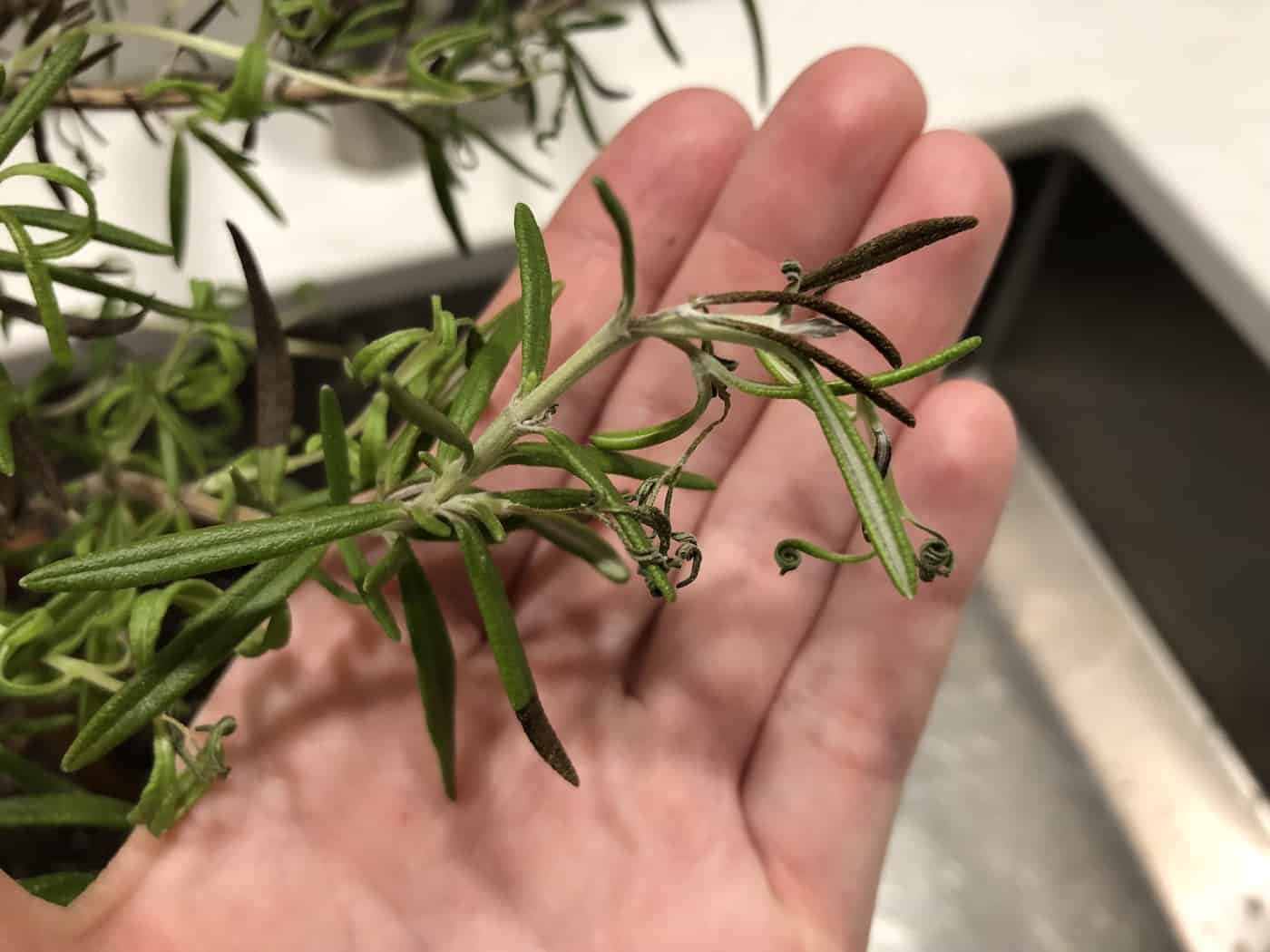
How to tell if you’ve overwatered your plant
If your Rosemary’s leaves look brown and dry, but the soil is wet, you’ve likely overwatered your plant. However, if your rosemary’s leaves are brown and dry, and the soil is also dry, then you should water it.
Rosemary is a unique plant because it prefers dry roots and moist foliage, which is the opposite of many other plants. Just imagine a sunny seaside coast in the Mediterranean with stony dry hills but moist seaside air.
Overwatering your Rosemary plant damages the roots, which causes the leaves and branches to turn brown and sad. This condition is known as root rot. This happens when the roots are saturated with water and they have no access to fresh air. Rosemary roots need access to both water and air. These plants are much more tolerant to drought than they are to sit in standing water.
What to do if your rosemary plant develops root rot
Rosemary plants with root rot tend to have leaves with brown tips (or leaves that fall off entirely). The plant will look quite sad and the pot will be heavy. Fortunately, there are steps you can take to rehabilitate your plant.
Plants with minor root rot can usually be saved simply by changing the environment. Start by removing any saucer or water-holding device so that water can drain easily. Move the plant beside the warmest, sunniest window in the house and put a fan in the area to promote air circulation. Let the plant dry out completely before watering again.
For serious root rot, the Rosemary should be repotted. Pull the root ball out of the planter. Loosen the potting mix and examine the roots. Cut off any slimy soggy roots and shake out the wet potting mix from the healthy portions of the root ball.
Repot the plant in a terracotta pot that’s perhaps 2″ wider than the old planter. Use a lightweight potting mix that contains perlite. Do not water the plant for several days after repotting, and even then, water only minimally to allow the plant to recover.
Do you water rosemary every day?
Rosemary is almost never watered every day. Even in the sunniest locations, this plant prefers to have somewhat-dry roots.
When Rosemary is grown in very small terracotta pots in sunny locations during very hot and dry weather, it may require watering every day or two. This is rare as Rosemary plants are usually potted up into larger terracotta containers that don’t dry out quite as quickly. Rosemary should only be watered multiple times a week if grown in a planter in a very hot sunny location.


